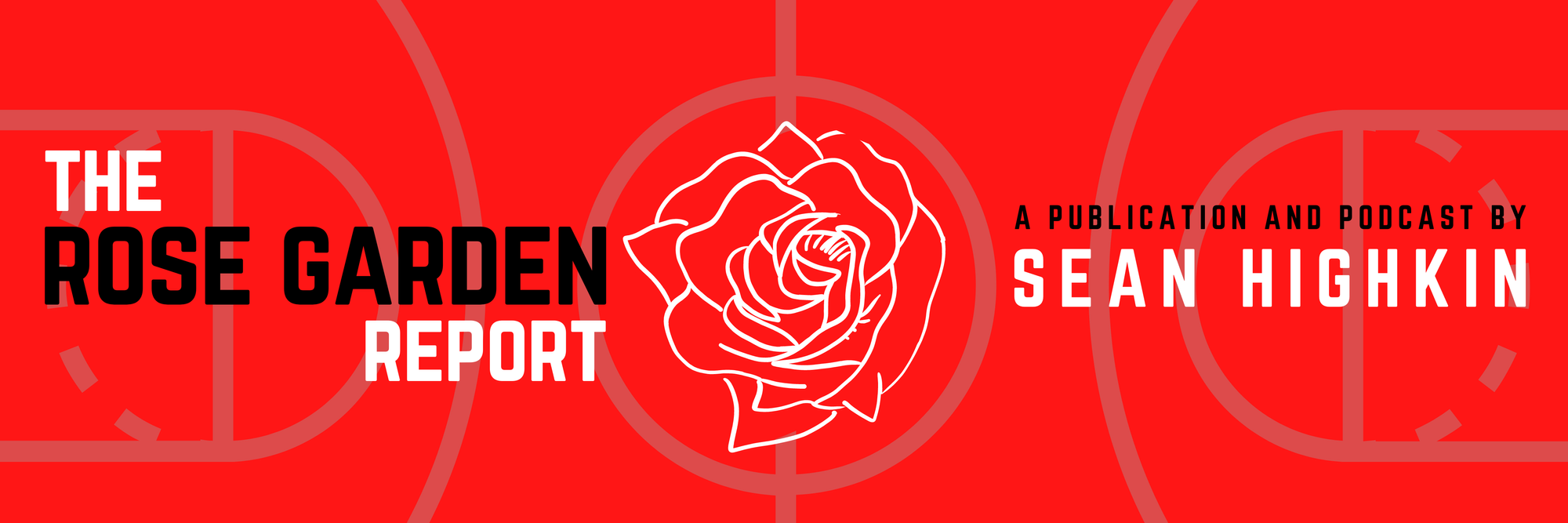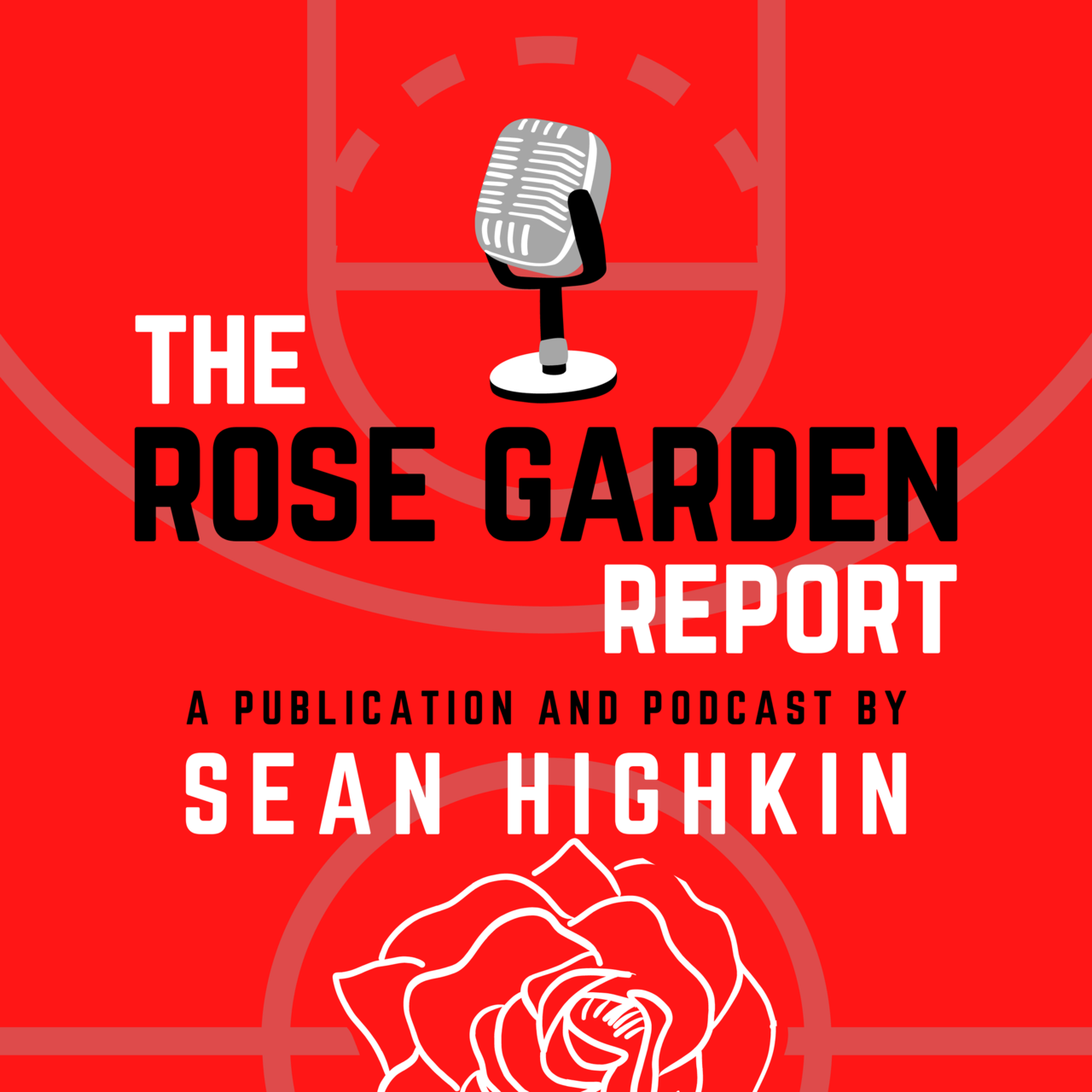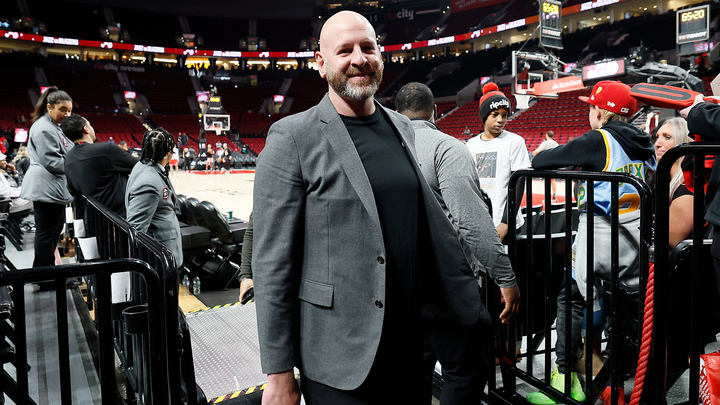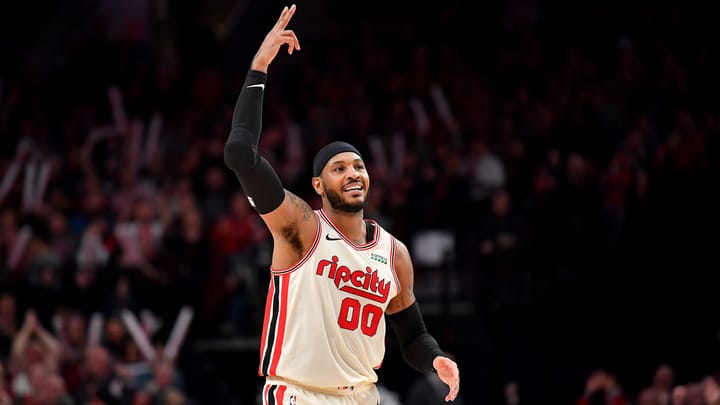A 2024-25 Trail Blazers Trade Season Primer
Sunday is the unofficial start of the NBA’s trade season. Here’s what the Blazers have to work with and what they might be looking for.

Every Dec. 15, many media outlets (including this one) roll out stories signaling the start of “trade season.” That’s because today is the first day that most players who signed as free agents in the offseason are eligible to be traded.
And every year, most of these stories come with a caveat: just because teams have more flexibility to make trades right now doesn’t mean they will until closer to the Feb. 6 deadline.
But this year, there have been at least a couple of early movers, albeit making minor moves. On Friday, ESPN reported that Indiana agreed to a deal for Heat big man Thomas Bryant to shore up their frontcourt depth, and yesterday, Golden State agreed to a deal with Brooklyn for Dennis Schröder. Neither of these deals are earth-shattering, but they came well before teams usually start making trades. These could be one-off moves, or it could be a sign that teams aren’t going to wait until the deadline this year.
Where do the Trail Blazers figure into things?
It’s too early to say. But they have several players that should and will receive interest, and will undoubtedly be one of the teams most talked about around the NBA between now and February. That was the case last year, too, and Joe Cronin ended up standing pat with the exception of taking a no-risk flier on Dalano Banton that’s worked out exceptionally well.
It may be a quieter deadline across the league than the last few have been, as teams navigate a highly restrictive new CBA. (My buddy Fred Katz at The Athletic has a good breakdown of just how limited many teams are in what they can do, that I recommend reading.)
But the Blazers, at least right now, figure to be one of the teams most active teams in talks, whether or not deals end up getting done.
Here’s everything you need to know about Portland’s financial situation, what they have to work with and which players are most likely to be on the move.
The Financial Picture and Available Trade Tools
As of now, the Blazers are $3.6 million below the luxury tax. If they wanted to, they could cut another $1.1 million by waiving Banton, whose $2.2 million salary is only 50 percent guaranteed until Jan. 10. I’d be shocked if they did that, because Banton has been a productive rotation player. So, for our purposes, that $3.6 million number is where the Blazers are.
In addition to matching salary, Portland has three exceptions they can use to take back money. They have a $6.8 million trade exception from the Malcolm Brogdon-Deni Avdija trade on draft night, and their full mid-level ($12.8 million) and biannual ($4.6 million) exceptions, which under the new CBA can be used as trade exceptions if you didn’t use them to sign free agents. So the Blazers could take back a player making up to $12.8 million without sending out any salary if they wanted to, but being so close to the tax line, it wouldn’t make any sense to do that unless they significantly cut salary in another deal. But these are tools they do have if they want to use them.
Aside from their own draft pick, which is still tied up with Chicago through 2027, the Blazers have these picks from other teams that they could, in theory, include in a trade:
- 2025 second-round pick from Atlanta (only conveys if it lands between 31 and 40)
- 2026 second-round pick from Memphis (protected 31-42)
- 2027 second-round pick from Minnesota (unprotected)
- 2028 first-round pick swap rights with Milwaukee (unprotected)
- The most and least favorable of three 2029 first-round picks between their own, Milwaukee and Boston (the second-most favorable of these picks was included in the Brogdon-Avdija trade)
- The less favorable of Indiana’s or Washington’s 2029 second-round pick
- 2030 first-round pick swap rights with Milwaukee (unprotected)
- 2030 second-round pick from New York (unprotected)
It’s unlikely the Blazers trade away picks at the deadline. It’s not impossible if the absolutely perfect deal comes along, though. They did include picks in the Brogdon-Avdija trade with Washington in June, because they identified Avdija as an ideal target based on fit, age and contract and were highly motivated to get him. It’s theoretically possible another opportunity like that presents itself, but I’d bet against it at the moment.
One more note on trade mechanics: the Blazers currently have all 15 of their roster spots filled, and the only player whose contract isn’t fully guaranteed is Banton (who, as I said before, I don’t think they’ll cut unless it’s necessary to facilitate another deal). So if the Blazers take back multiple players for one in a deal, they have to open up the roster space somehow, either by waiving someone or sending out multiple players in another deal.
Which Players Will or Will Not Get Traded?
You’re really talking about five players here, and it’s five of the same six as last year (minus Brogdon, who they did trade this past summer).
Let’s get the rest out of the way quickly:
- Only a handful of players in the entire league are truly “untouchable,” but it’s safe to say the Blazers won’t be interested in entertaining trade offers for Shaedon Sharpe, Donovan Clingan or Toumani Camara.
- Scoot Henderson’s second season has been up-and-down, and they still don’t know what he is long-term but he’s in the category of “worth more to the Blazers than he would be on the trade market.”
- They just traded two first-round picks for Avdija and very much view him as a long-term piece, so he’s extremely unlikely to be moved.
- Your mileage may vary on anyone below that in the rotation. I think the Blazers like Kris Murray and Rayan Rupert long-term the most out of any of the guys in that part of the hierarchy. My good friend and now Substack colleague Jake Fischer wrote an interesting piece a couple weeks ago on the increasing value of players on minimum contracts, and suggested that Duop Reath could be worth a couple of second-round picks on the trade market. Considering he’s been out of the rotation for most of the season, I have to think that’s something the Blazers would jump at. I could see them also being open to moving Jabari Walker or Banton, both of whom will be free agents this summer (restricted and unrestricted, respectively) given the uncertainty of where they fit in the future plans.
That leaves these five players, who are legitimately worth discussing as trade possibilities between now and February:
Jerami Grant
Contract details: $29.8 million in 2024-25, $32 million in 2025-26, $34.2 million in 2026-27, $36.4 million player option in 2027-28.
Grant is going to be the name you hear the most over the next two months, and he’s the Blazers player I think is most likely to be somewhere else after Feb. 6. He doesn’t fit Portland’s timeline and is a proven good, productive two-way player who can help a good team. Trading Grant would also allow Avdija to move back into the starting lineup next to Camara. Grant isn’t unhappy in Portland but I don’t think he’d be opposed to a move to a contender. It makes sense from both sides to move on.
Over the summer, the Blazers had a high asking price for Grant. Talks with the Lakers stalled because they were unwilling to include both of their available first-round picks. If they had, Grant would be a Laker right now. I haven’t heard that Cronin’s asking price has come down. Right now, teams are indicating that two first-rounders is more than they’re willing to give up. A lot can change before February, so there’s no reason to lower the ask unless they have to.
Grant’s salary makes it tricky to put together a trade. Not because it’s a bad contract—$30 million a year is just what good starters cost these days, and that number will only go up in coming years as the cap rises with the new TV deal—but because the current CBA has such stringent rules about salary matching and limiting mechanisms for trades. But Grant will have a market, and there will never be a better time for the Blazers to do something there.
Deandre Ayton
Contract details: $34 million in 2024-25, $35.6 million in 2025-26.
The arrival of Clingan makes it obvious Ayton isn’t the long-term starting center, so one would think that at some point between now and next trade deadline, they’d like to trade him.
I think an Ayton deal is most likely to happen this summer, rather than at the deadline. Just like with Grant, a salary that big is tough to move in-season, and Grant has significantly more value to other teams right now than Ayton does. If there’s a player the Blazers have that will be worth the effort on both sides to put together that kind of multiple-players-for-one deal, it will be Grant. In the offseason, Ayton becomes an expiring contract and during the summer, you’re allowed to have more than 15 players under contract, so it becomes much easier to find a taker and match salary.
Anfernee Simons
Contract details: $25.9 million in 2024-25, $27.7 million in 2025-26.
Simons is in a weird spot in his career. He’s having a down year by his standards, but scored 30 in Friday’s loss to San Antonio. He’s still only 25, so he isn’t close to being past his prime, but he’s still in a different point in his career (he wants to win) than where the Blazers are right now. If Henderson had shown more in the beginning of his career, it would be a no-brainer to trade Simons and hand the keys over to him. And guys like Simons (undersized volume scorers) aren’t the kind of player that teams value highly anymore. His contract is a reasonable number in a vacuum, but he’s going to want a raise after his deal is up following next season. I don’t think it makes sense for Portland to be the team that gives it to him, but I don’t know what team does.
Simons’ situation is somewhere between that of Grant and Ayton. Simons will probably have more interested teams than Ayton between now and the deadline, but like Ayton, it could be easier to move his contract in the summer than during the season.
Matisse Thybulle
Contract details: $11 million in 2024-25, $11.5 million player option in 2025-26. Contract includes a 15 percent trade kicker.
A helpful wing defender on a reasonable contract who doesn’t have a clear place in Portland’s future should be an ideal trade candidate who could net the Blazers at least a couple of second-round picks, maybe even a protected first from a playoff team, in normal circumstances. However, Thybulle has yet to play this season after suffering a bad ankle sprain that will likely keep him out at least through the first of the year.
If they can get him back on the court in January and show teams that he can still contribute, he should have a market come deadline time.
Robert Williams III
Contract details: $12.4 million in 2024-25, $13.3 million in 2025-26.
I wrote in much more depth about the Blazers’ dilemma with Williams last month.

The short version: Williams’ extensive injury history makes it hard to plan on him being in Portland for the long haul, as much as he’d make sense with the young core…but if other teams think they can get him at a discount because of that injury history, then at that point it might make more sense for the Blazers to just keep him, because when he does play, he’s the most valuable and impactful two-way player currently on this roster, and he’s only 27 making a reasonable salary…but that injury history also means there’s a good argument to just move him ASAP for whatever value they can get.
It’s a real debate, with no easy answers. What I do know is that the Blazers love Williams, on and off the court, and don’t want to trade him unless they get an offer that’s truly worth their while. Out of all their veterans, this is going to be the most interesting situation to watch play out, whichever way it goes.
What are the Blazers Looking to Add?
Portland still doesn’t have its foundational star, but there has been some progress in the rebuild from where it was last season. I count four players that are likely to be a part of the next Blazers team that’s actually trying to be good: Sharpe, Clingan, Camara and Avdija. You can add Henderson to that list if you want—the jury is still out on whether he’ll show enough improvement to be included in that group.
So if the Blazers take back contracts that go beyond this season, they have to be players that either fit around those guys long-term or are salary that could easily be moved down the line. As with any trade negotiation, the better the players are coming back, the less the ask is for draft picks.
The Avdija trade was uncharacteristic of a rebuilding team—front offices in Portland’s position are usually looking to add draft capital rather than spend it—but they felt strongly enough about Avdija to target him and pay that price for him. In general, this front office has prioritized getting back players rather than just picks. You saw that with all of Cronin’s biggest moves since they started the rebuild, not least of which was the Damian Lillard trade that came with some far-out picks from Milwaukee but was mainly centered around players.
Not that they wouldn’t mind getting more draft picks, because you can never have enough of those, whether to use yourself or include in future trades. And if they’re taking back bad long-term salary in a Grant or Simons trade, they’ll want picks to make it worth it for them.





Comments ()